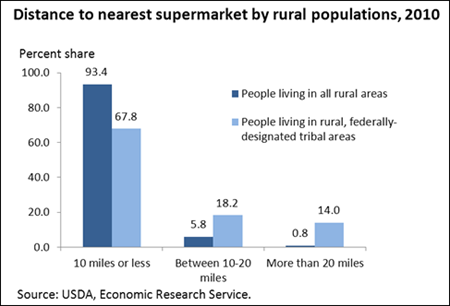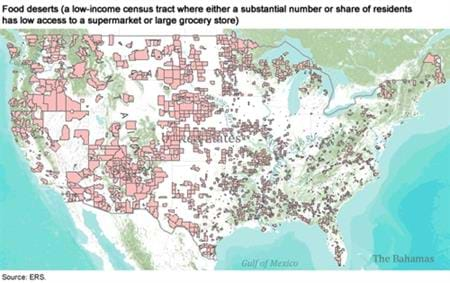ERS Charts of Note
Subscribe to get highlights from our current and past research, Monday through Friday, or see our privacy policy.
Get the latest charts via email, or on our mobile app for  and
and 

Friday, January 4, 2013
Efforts to encourage Americans to eat more nutritious foods presume that a wide variety of these foods are accessible to all. But some Americans, including those living in tribal areas, may lack access to stores that carry both healthful and affordable foods. More than 1.3 million people reside in federally-designated tribal areas in the United States, and 71.5 percent of them live in rural areas. In 2010, 14 percent of people living in rural tribal areas lived more than 20 miles from a supermarket, and another 18.2 percent lived between 10 and 20 miles from the nearest supermarket. A greater share of the rural tribal area population lived farther than 20 miles from the nearest supermarket than the share of the total U.S. rural population (0.8 percent). The statistics for this chart can be found in the ERS report, Access to Affordable and Nutritious Food: Updated Estimates of Distance to Supermarkets Using 2010 Data, ERR-143, November 2012.

Tuesday, May 10, 2011
The Food Desert Locator provides a spatial overview of low-income neighborhoods with high concentrations of people who are far from a supermarket or large grocery store. This mapping tool will allow users to map food deserts-areas with limited access to affordable and nutritious foods-and view census tract-level statistics on population groups with low access to healthy and affordable food. An estimated total of 13.5 million people in these identified census tracts have low access to a supermarket or large grocery store-that is, they live more than 1 or 10 miles from a supermarket or large grocery store. Of these 13.5 million people, 82.1 percent are in urban areas. This map is from the Food Desert Locator, released May 2, 2011.


